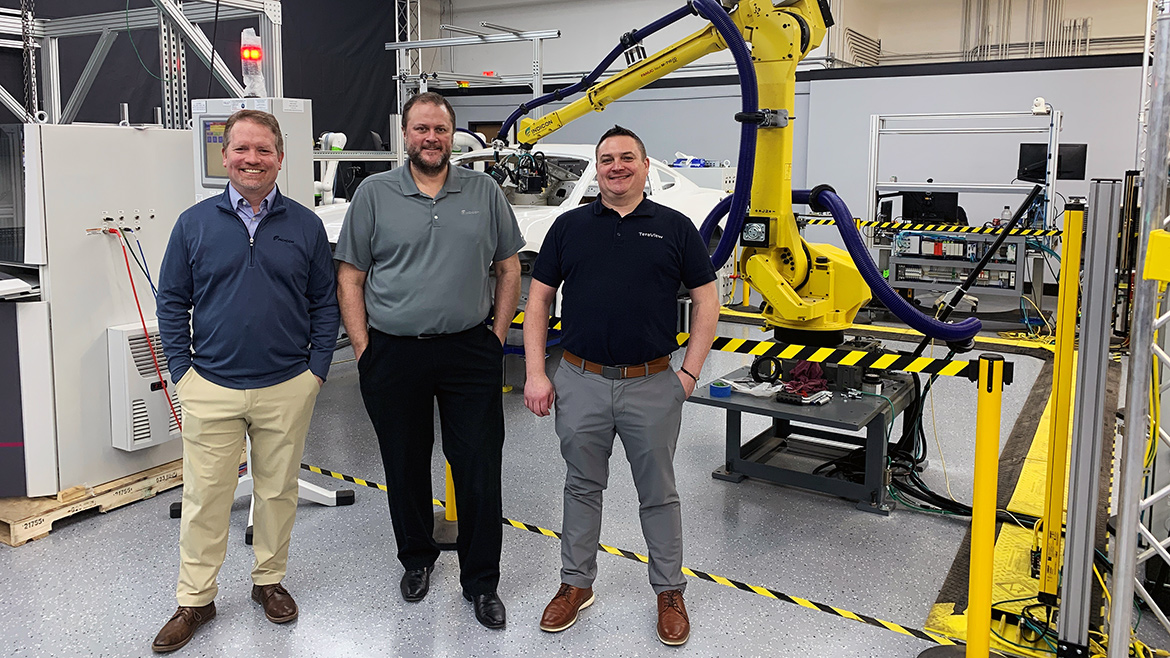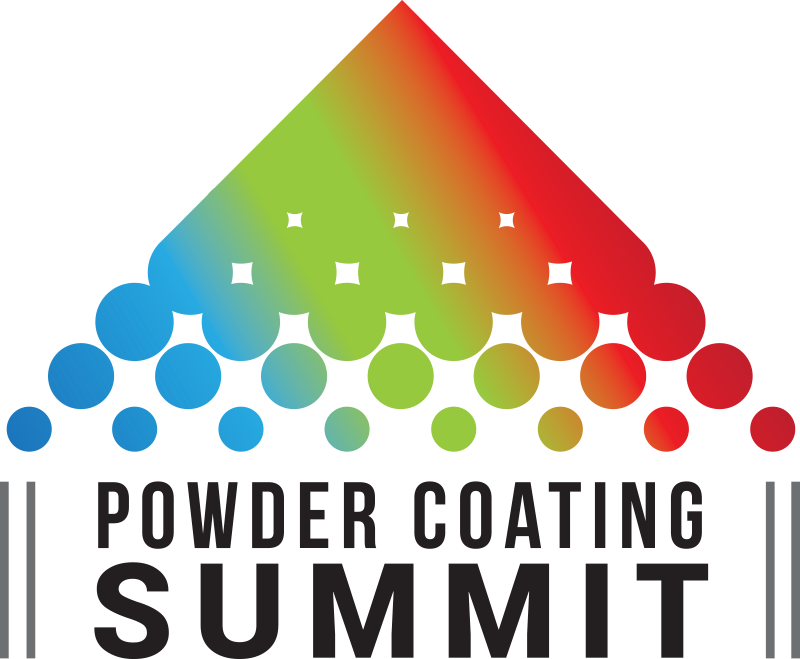Emerging Technology Improves Coating Quality and Eliminates Paint Waste

Kristin Johansson, Chief Editor, PCI
PCI’s editors were recently invited to attend a live demonstration and Open House in Sterling Heights, Michigan, to explore how terahertz technology can eliminate paint waste and improve coating quality in automotive and aerospace manufacturing. The event was hosted by Indicon and TeraView, who have partnered to develop an integrated terahertz robotic solution.
According to TeraView, terahertz light lies between infrared and microwaves, and has unique properties that enable it to pass through objects and to transmit images (structural) and compositional (spectroscopic) information that is ordinarily hidden. The company developed a sensor that uses a pulse of terahertz light to illuminate the coated surface from a short distance. Proprietary software algorithms are then used to generate the corresponding layer thicknesses from the reflected waveforms received. The sensor offers noncontact, nondestructive, multilayer coating thickness measurement with exceptional accuracy, achieving tolerances approaching 1 micron.

We spoke with Andy Bell, VP Business Development, and Jeff Maatta, NA Sales Manager, of TeraView’s Automotive & High-Value Coatings division. They explained that the sensor can measure coating thickness, density, loading and conductivity, and that they are currently working on adding porosity to the list. They shared that this new technology replaces X-ray and beta sensors, which are not able to measure the thickness of each coating layer independently, and are more limited in terms of the spaces on a vehicle or airplane that can be reached.

TeraView partnered with Indicon, a leading control system integrator, to leverage the company’s extensive experience in delivering turnkey automated systems to the automotive sector. Indicon developed a 6- or 7-axis robot that incorporates TeraView’s sensor. Other measuring instruments can be added as well, such as the BYK-mac i metallic color, multiangle spectrophotometer.
As we watched the robot perform real-time measurements on key areas of a vehicle body, Jeff Angus, Vice President of Indicon, explained that the system is designed to accurately and repeatably measure critical points (up to 90) on vehicle bodies, seamlessly integrating with paint shop quality control processes. He also discussed the multiple benefits of the system, including no longer needing manual measurements, repeatability/consistency, safety (nonionizing and noncontact), increased production speed and quality control. A large-screen television mounted above the robot was streaming the assembly line at one of Ford’s plants in Kentucky where this system has been incorporated so that we could watch the system in action.
Brian VanderPryt, Director of Engineering, Vision & Special Projects at Indicon, explained in detail how the robot works, and how the measurements are recorded and used. He also gave us some insight into their development process. Other emerging technologies were on display in the showroom as well, and he was gracious enough to walk us through many of those projects as well. I’m sure he felt like he was under rapid fire with all of our questions, but he was excited to share the information with us, and we’re thankful for the time he spent with us to demonstrate the technologies they have developed.
One aspect that stood out during our visit was how these advanced technologies extend far beyond automotive and aerospace applications. Hearing about their use in semiconductor fault analysis, pharmaceutical coatings and other high-value industries reinforces how true innovation isn’t confined to a single sector. Instead, cross-industry collaboration and system integration drive progress, showing that the most impactful advancements often come from looking beyond traditional boundaries.
We love to get out and see the coatings industry up close and in person. Courtney and I both learned a lot, and are excited to feature a more in-depth article on this technology in the future!

